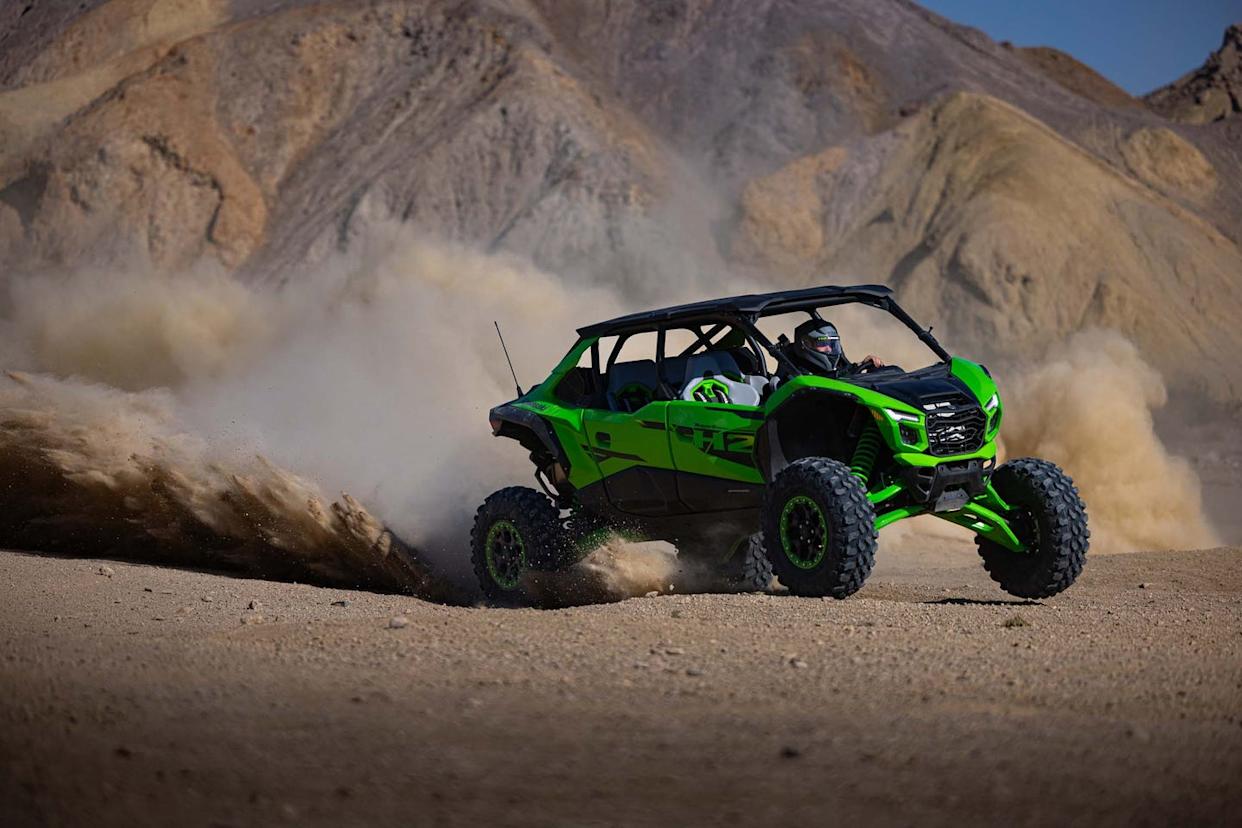
There's a war happening out in the desert and deep in the woods. Not the bullets-and-hand-grenades type, but there is a copious amount of firepower. The high-performance side-by-side segment is flush with hundreds of microexplosions per second, sending horsepower numbers soaring. The Polaris RZR kicked it off with a 225-hp naturally aspirated 2.0-liter inline-four. Next came the Can-Am Maverick R’s 240-hp turbocharged 1.0-liter inline-three. Now it's Kawasaki's turn, with the 2026 Teryx H2, which might be the most powerful production buggy to date.
"Might be"? Kawasaki boasts that its supercharged and intercooled 1.0-liter inline-four huffs and puffs its way to 250 horses. But read the fine print, and that claim comes into question. Kawasaki certified its engine with an International Organization for Standardization method used for motorcycles, while the others use a more common SAE International method. The horsepower figure would be less if certified using the SAE methodology, but there's no conversion between the two. So it might be the most powerful.
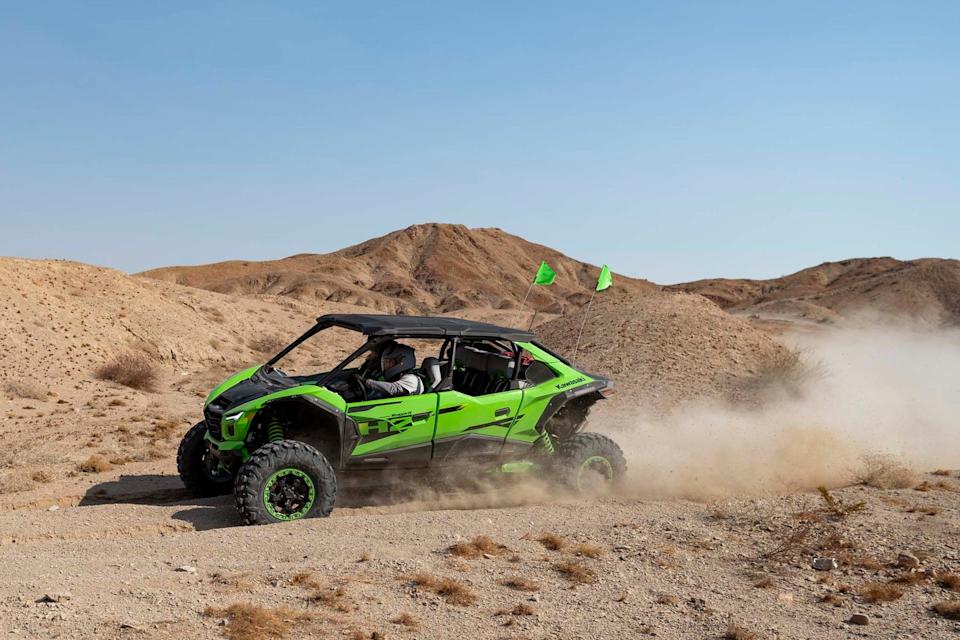
Nevertheless, this blown 1.0-liter is a rad engine. It's closely related to the fire-breathing engine in the Kawasaki H2 superbike. Its little supercharger is driven off the crankshaft by a planetary gearset. The six-to-12-blade 69-mm impeller is machined from forged aluminum. At full tilt, it can spin at almost 130,000 rpm and stuff the intake with roughly 19 psi of boost.
We traveled to the searing desert heat of Ocotillo, California, to experience Kawasaki's hotted-up buggy in an open-space environment. With the turn of the key, the boosted four purrs at idle. There are three power modes: Low (60 percent of full power), Mid (80 percent), and Full (100 percent). It's unclear why anyone would want to use less power than what they paid for, but the option is there.
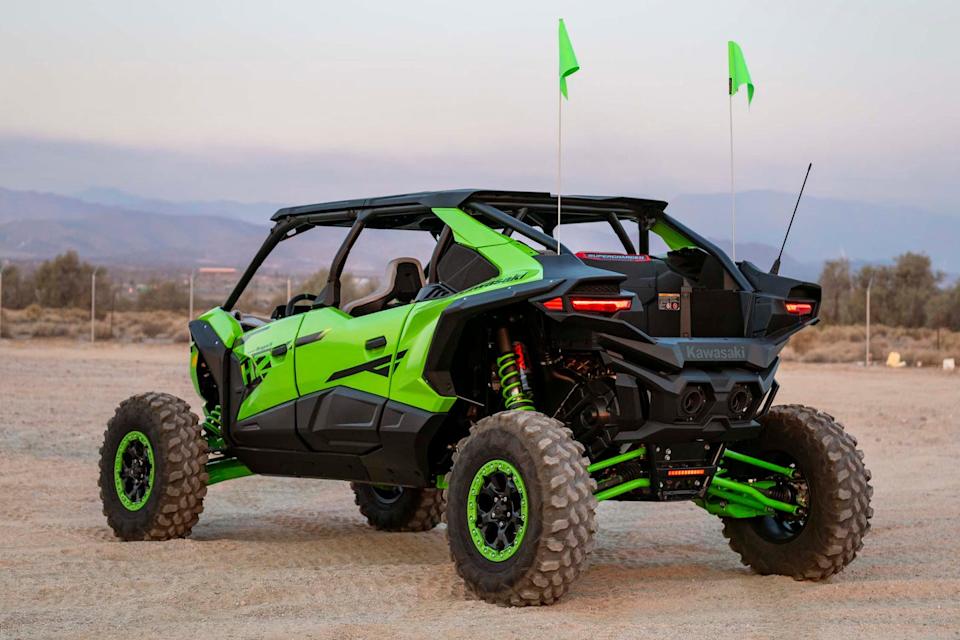
Underway, the engine pulls linearly through its power curve. Air flows through four 40-mm throttle bodies and meets eight fuel injectors squirting away beyond 5000 rpm. (Only four injectors operate below 5000 rpm.) This engine loves to be wrung out near its 9500-rpm redline, primarily because that's where the power lives. Its 250-hp peak occurs at 9000 rpm, and the full 146 pound-feet of torque arrives at a sky-high 8800 rpm.
Kawasaki opted to use a continuously variable automatic transmission (CVT). The argument is that it's a simpler, more cost-effective device with fewer working parts than a dual-clutch automatic, as in the Can-Am Maverick R. That's true, but the CVT is belt driven, and belts get hot. They also break and need to be replaced. From the seat of our pants, the Kawasaki doesn't feel as quick as the Can-Am, but we saw an indicated 101 mph across a dry lake bed. Dipping into and out of the throttle elicits chirps and whooshes from the blower. Do it long enough, and the CVT's temperature warning will illuminate in the digital cluster. When it's time to slow down, the unassisted brakes feel great. Cleverly, they activate the rear calipers before the fronts to minimize the amount of nosedive.

Keeping that power on the ground across battered desert terrain requires a hearty suspension, and the Teryx H2 has one. It features earth-shredding 33-inch Maxxis Carnivore Plus tires on bead-locking wheels along with 23.2 inches of suspension travel up front and 24.0 inches in the rear. The base $39,594 model comes with position-sensitive Fox external-reservoir dampers but is otherwise limited to the essentials, meaning no roof, stereo, or other amenities. That's the version for folks who plan to customize it themselves.
There's also the Deluxe eS four-seat configuration for $45,594, with an optional fifth seat ($500), something rivals don't offer. The Deluxe eS also includes such fripperies as a roof, a six-speaker stereo, and a crisply rendered and intuitive 10.0-inch Garmin touchscreen infotainment system with navigation, buddy tracking, and off-road-specific menus.
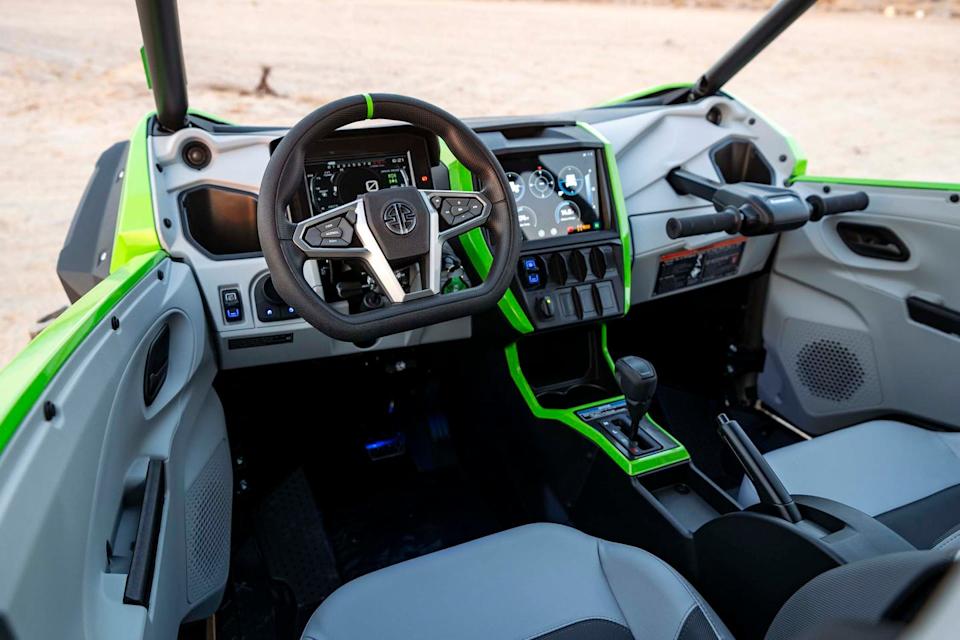
We spent our time in the Deluxe eS, which also includes electronically controlled Fox Podium 3.0 Live Valve adaptive dampers that eat whoop-de-doos for breakfast. Each damper has an accelerometer that quickly senses whatever nonsense the damper was just subjected to. A six-axis inertial unit, the engine controls, and the steering sensor help the system determine an algorithm to deliver the best ride. It works. We hit dips, pits, humps, and bumps with enough force to send the rider to PT, and the Teryx welcomed every impact.

When the side-by-side is attacking corners, the LiveValve dampers can also firm up the outer units to mitigate body roll, but at 74.0 inches wide, the Teyrx H2 feels tippier than the 4.1-inch-wider Can-Am Maverick R. Still, the Kawasaki is a riot to drive. Select the rear-wheel-drive mode to slide the tail out, or go with four-wheel drive to maximize forward thrust. There's also a 4Lo mode for creeping and crawling—and with 90-degree approach and departure angles, rock crawling is a specialty.
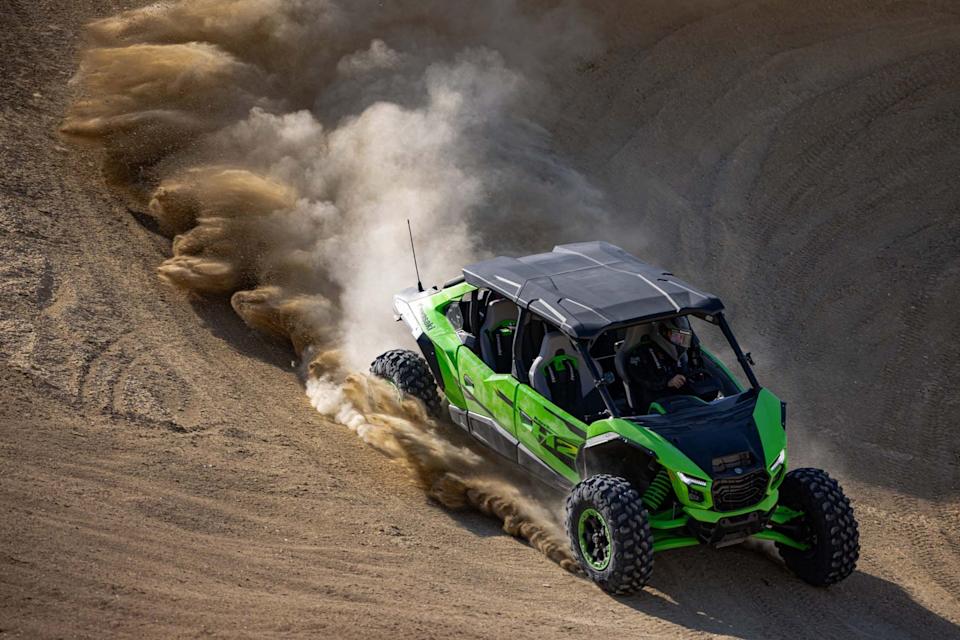
The H2's horsepower is excessive; the pricing is excessive. Everything about this high-performance buggy segment is over the top. But that's what happens in times of war.
You Might Also Like
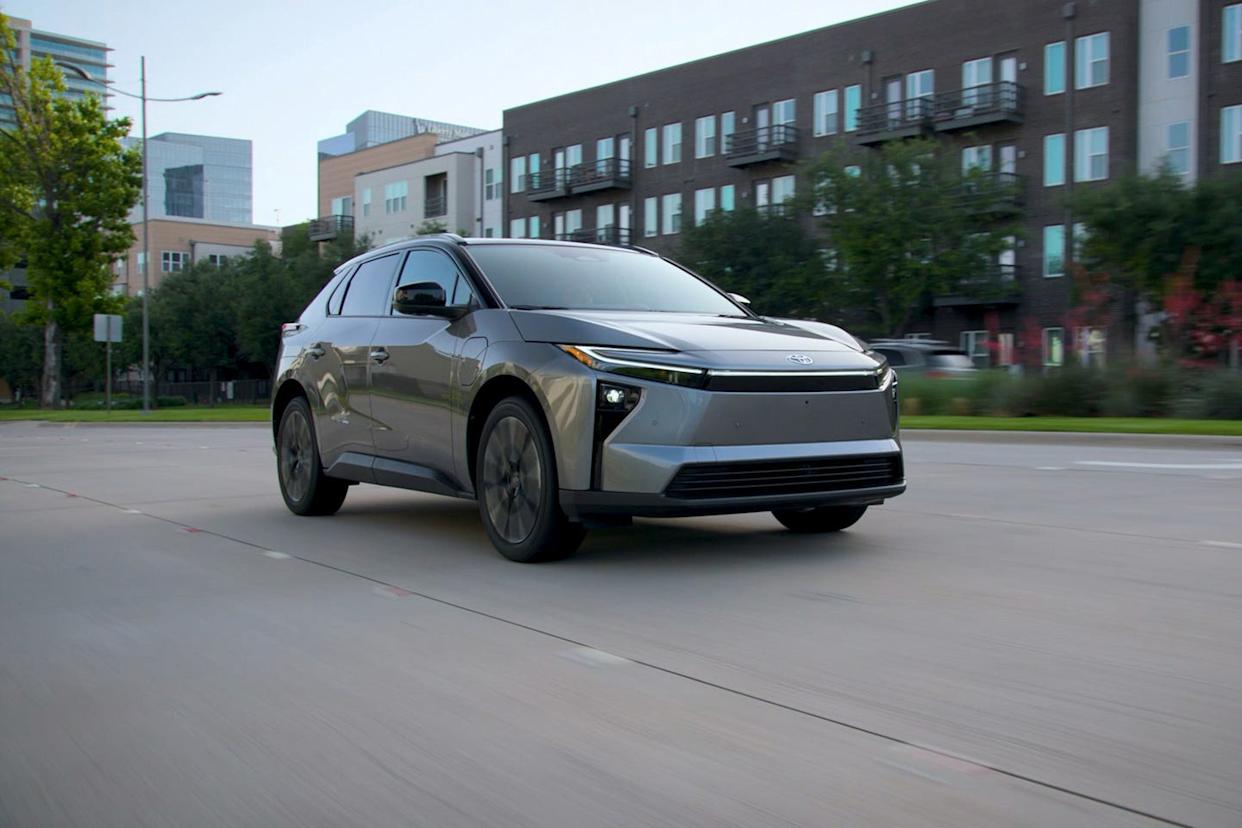
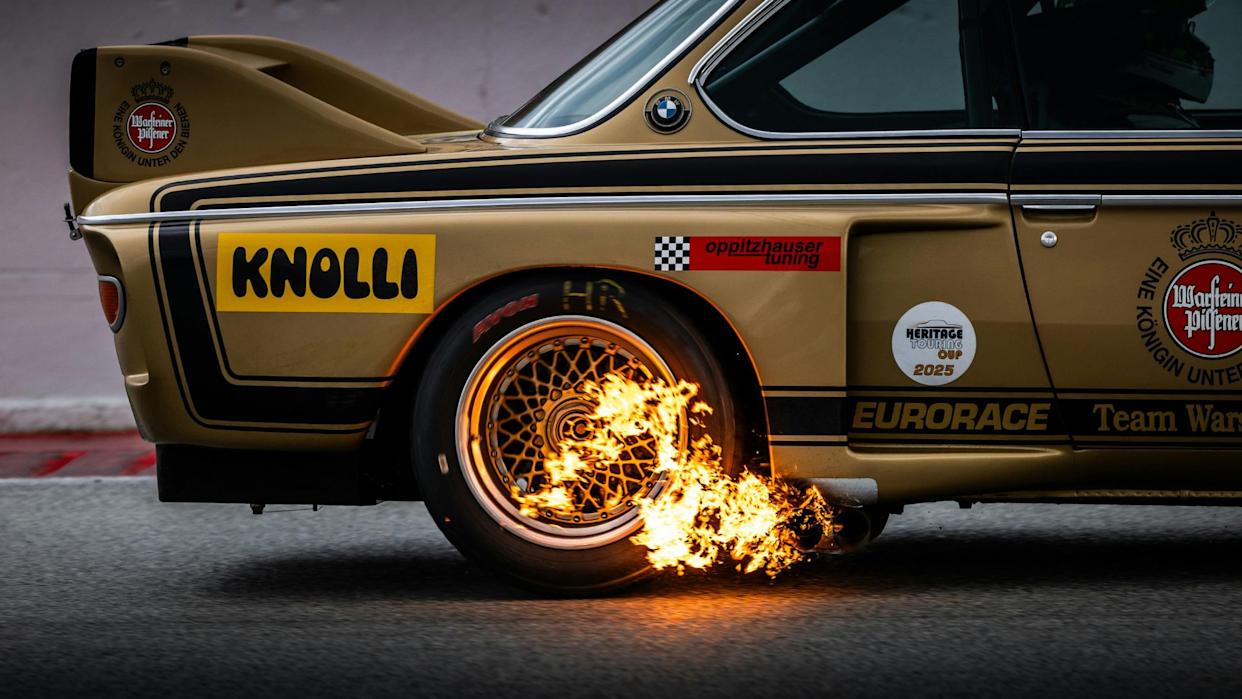
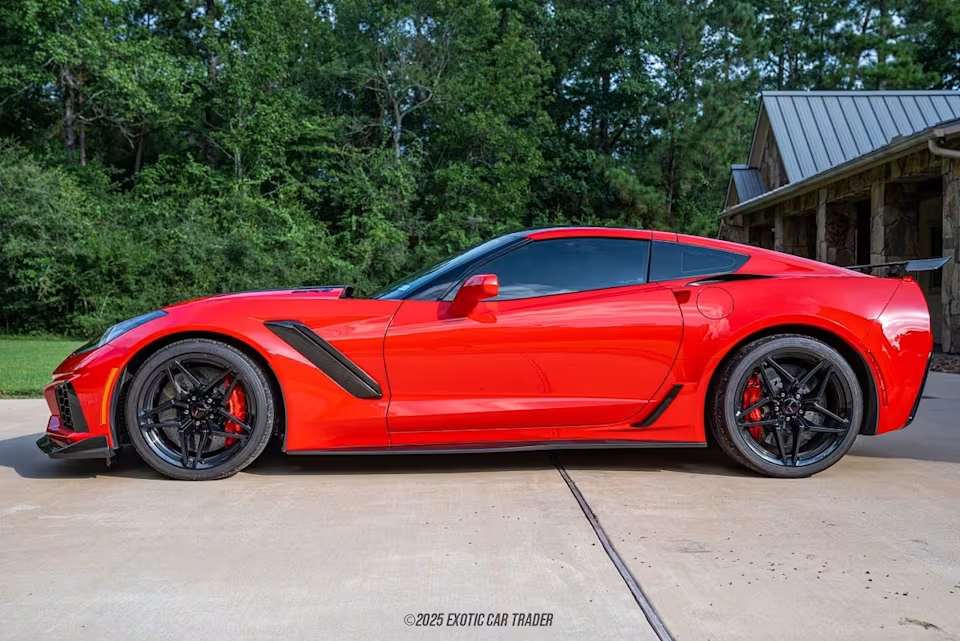
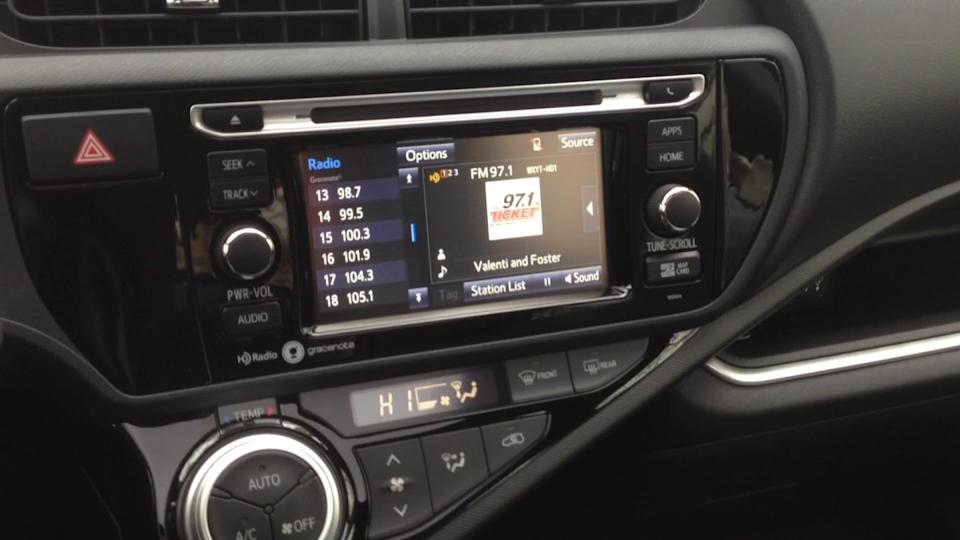
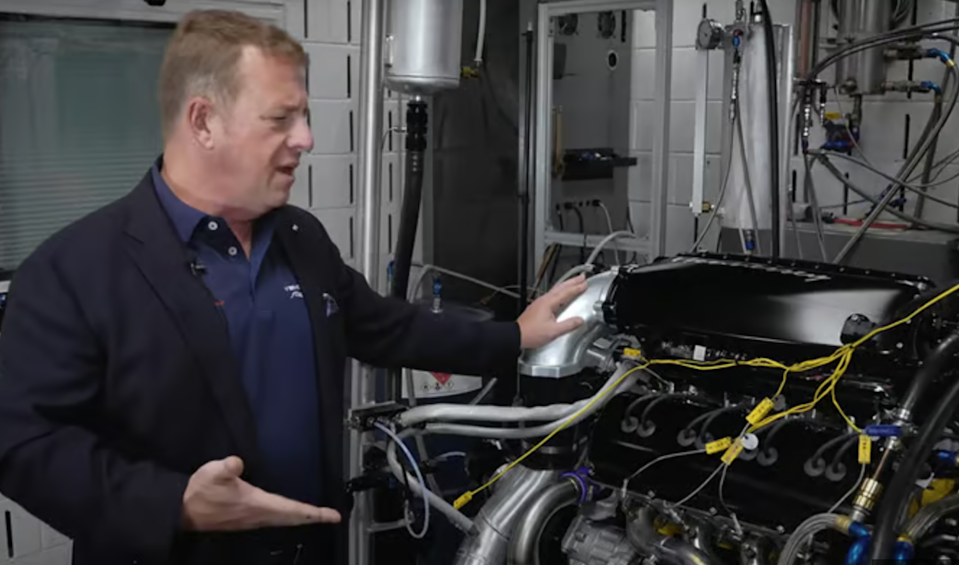
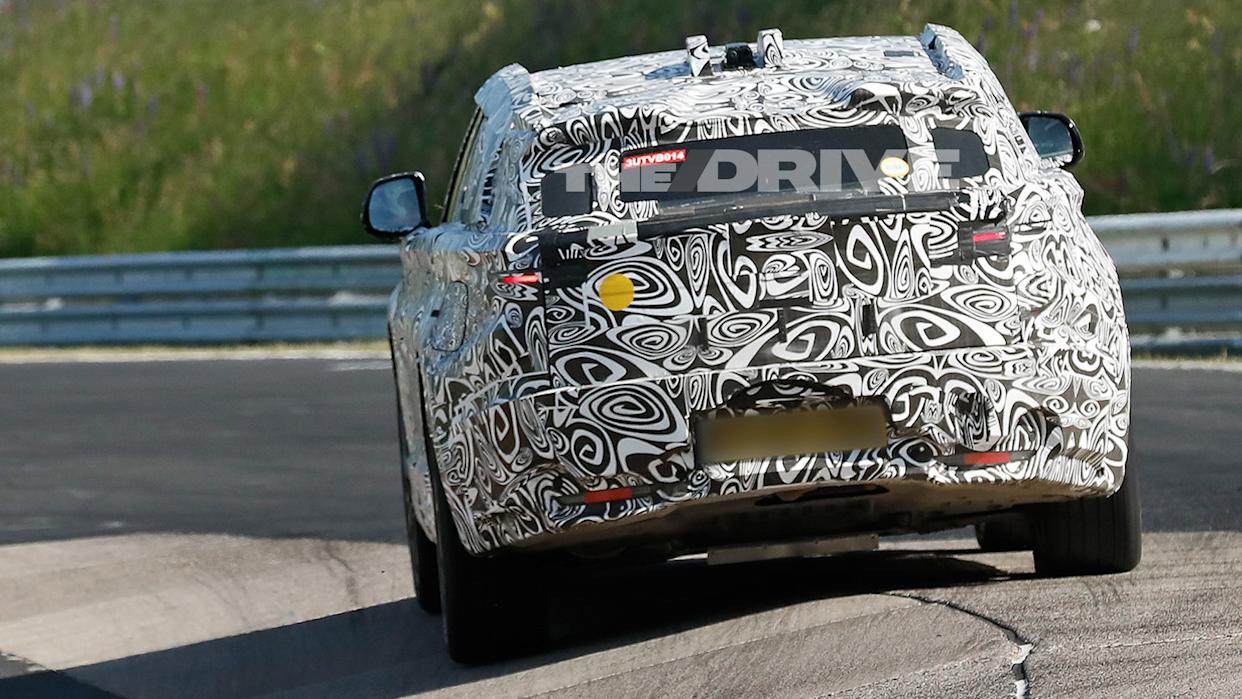

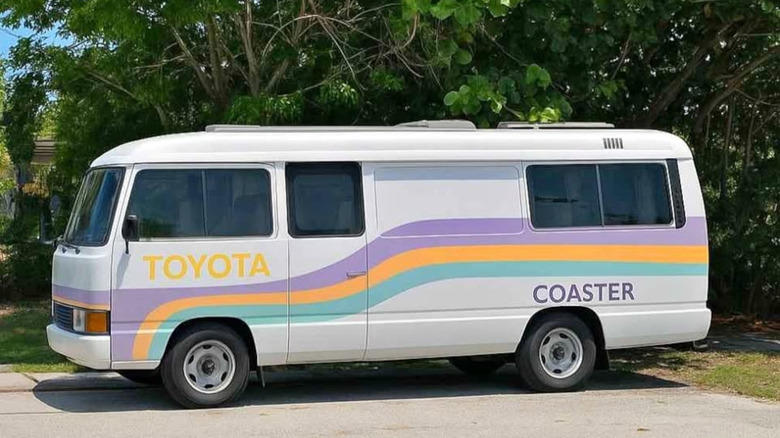
Comments